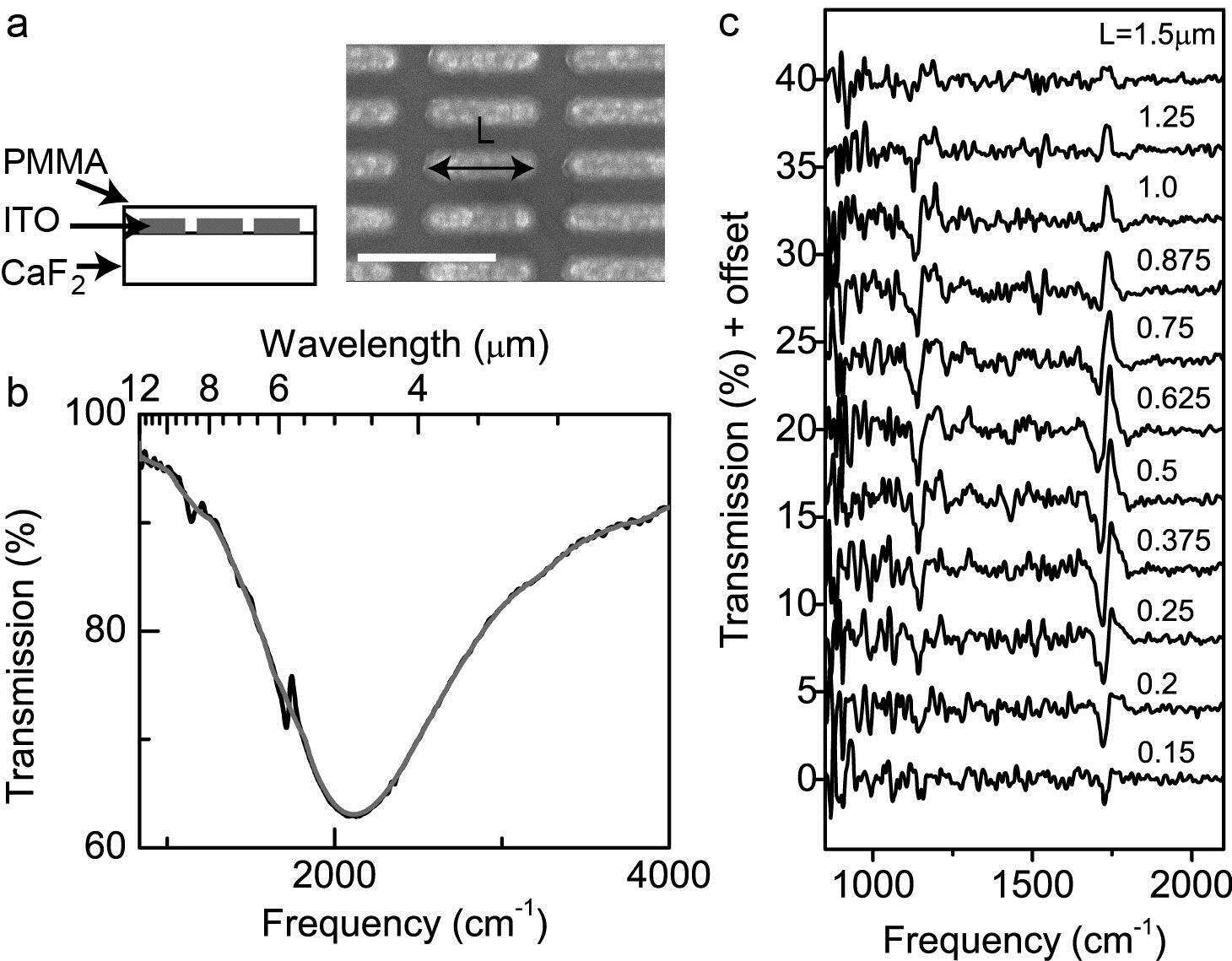
Metal Oxide Plasmonic Antennas
Plasmonics, the manipulation of electromagnetic fields on nanometer length scales using small metal structures, has many applications in sensing. The enhancement of electromagnetic fields around metallic nanostructures is of interest for enhancing the interaction of light with molecules. Recent years have seen a development toward new materials for plasmonics, with applications in near- and mid-infrared. I will present our recent work on plasmonic nanoantennas using oxide and nitride building blocks, and their use in active plasmonics and plasmon-enhanced spectroscopy.
We have demonstrated that high-density arrays of ITO nanoantennas provide a strong enhancement of the infrared absorption of deposited molecules. By tuning the antenna length, it was found that ITO antennas of around 500nm length are optimal for surface enhanced infrared spectroscopy (SEIRS) in the molecular fingerprint region. This length is much smaller than the corresponding resonance length for noble metal antennas, mainly due to the reduced surface plasmon wavelength inside the oxide.
Metal oxides are materials of great interest for a wide range of applications in electrochemistry, catalysis, sensing, and electronics. The combination with plasmonics can enhance functionality, or can be used to open up entirely new applications combining the properties of these technologically relevant materials.
[1] M. Abb, Y. Wang, N. Papasimakis, C. H. de Groot, O. L. Muskens, Nano Lett. 14, 346 (2014).

Figure (a) SEM image of ITO antennas on CaF2, scale bar 1μm. (b) FTIR spectrum of the ITO antennas showing resonance at around 5800nm wavelength. Grey line: 50-pt moving average. (c) Molecular SEIRS spectra obtained for different antenna lengths L by subtracting 50-pt moving average from FTIR transmission. Resonant enhancement is observed for L=0.5 μm.
Powered by Eventact EMS